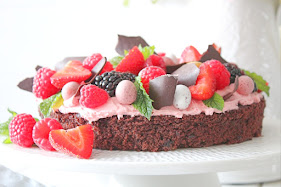{Thursday Tip: A regular weekly feature sharing my quilting tips. There are no rules in quilting, these are just the things that work for me and might help you. There are no quilt police, so use them as a guide; no ones watching :) There is no wrong way to do anything......just relax, experiment, learn, create and have fun. }
Basting a quilt, should be done carefully and leisurely to ensure the best outcome for your quilting. A poorly basted quilt, effects the overall quality of the finished product which can be heartbreaking after all the love and hours you have injected into your quilt top.There are several ways to baste a quilt i.e. safety pins, hand basting with needle and thread or quilt basting spray. Personally I have never used the spray, therefore I cant comment; I prefer to pin baste when machine quilting or hand baste when hand quilting.
It is a time consuming job which requires a little extra preparation, so here are a few tips to help you:
- Choose the best wadding for your quilt. Ideally a light to medium density wadding is best for quilts that will be hand quilted and a medium to high density wadding for quilts that will be machine quilted.
- Wool wadding is perfect for hand quilting as the lanolin in the wool helps to slide your needle through more easily. Also choose a wadding which is smooth and even in texture, to avoid bumps interrupting your flow of stitches as you hand quilt.
- I prefer to use either a 100% cotton or a wool/cotton blend wadding. I have been convinced to try others but I have been disappointed with the results.
- If possible, lay out your wadding on a flat surface for a couple of days, to allow it to relax and to eliminate any wrinkles and creases.
- It is easier to centre your quilt top, if the wadding and the quilt backing are cut to the exact same size: which should be approximately 3" to 5" larger than the quilt top, all around.
- When you are ready to baste, lay out your well pressed backing fabric, right side down, on a hard surface, either a table or the floor. Once you have ensured everything is smooth and wrinkle free, tape the backing into position, with some masking tape. Lay the wadding on top and again, smooth out wrinkles and tape into position. Lay the well pressed quilt top, on top and centered, right side up.
- If you are hand basting, choose a thread colour that stand outs, so you can remove it easily after the quilting is completed. I also use a double thread for added stability.
- It is preferable to begin basting in the centre of the quilt and then work in sections; if everything is secured perfectly, do what works best for you.
- Pin or hand stitch at regular intervals. Every 4"- 6" is a good guide, and ensure you smooth out any wrinkles as you go.
- Closing hundreds of pins can be painful on the hands but I believe there is a tool to assist in pin closure or you could try a steel knitting needle or crocheting hook (this also eliminates any punctures and accidental bleeding)
- Once basting is complete, carefully roll your quilt to store until you are ready to quilt, avoiding adding any wrinkles to your carefully prepared quilt sandwich.
I enjoy every single quilting process, except basting. Even though it gets me one step closer to quilting and the end result, its something I dread and procrastinate over. I enlist the help of my daughter and we clear our schedules, pop on a DVD and baste away together. Find what works for you, to achieve the optimum results and to have a little fun while working on a "not so fun" task.











No comments
I hope you enjoyed your visit to my blog. I love hearing from you so thank you for taking the time to leave me a message. 😊